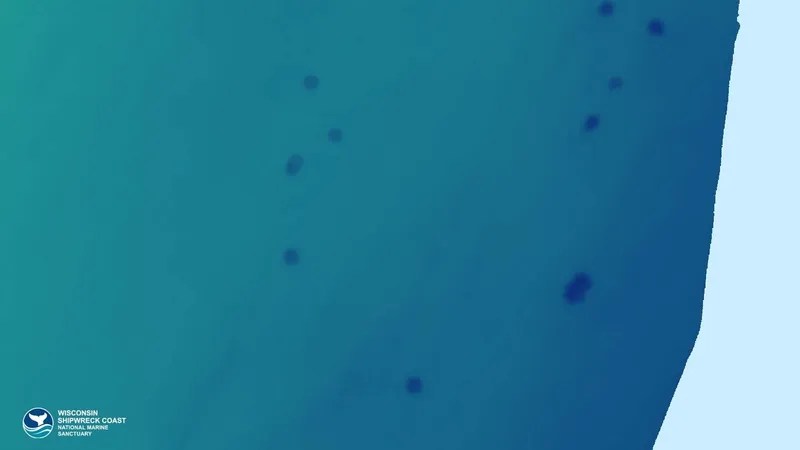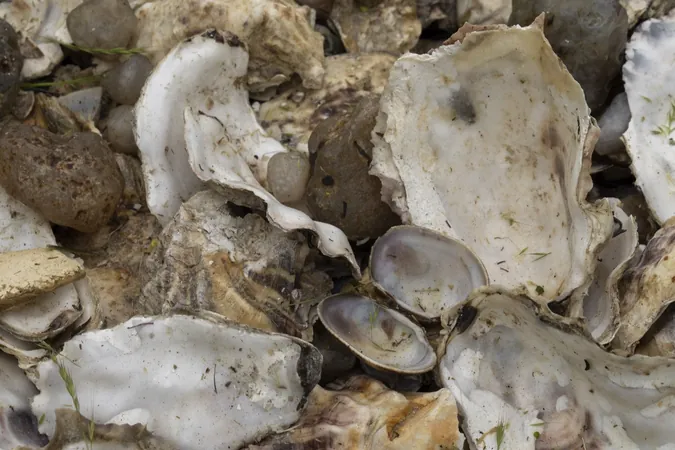
Unveiling the Secrets of Lake Michigan: 40 Mysterious Craters Discovered!
2024-09-27
Exciting Discoveries Await
Scientists have confirmed the existence of approximately 40 massive craters at the bottom of Lake Michigan! Initially revealed through sonar images two years ago, these enigmatic formations baffled researchers who were left wondering about their origins. Now, recent surveys have shed light on these natural wonders, yet many mysteries still linger beneath the surface.
The Adventure Begins
The adventure began in 2022 when researchers set out to map the lakebed within the Wisconsin Shipwreck Coast National Marine Sanctuary, an area renowned for its historical shipwrecks. During their mission, they observed peculiar circular images that were unlike any human-made structures—they seemed to be natural depressions in the lakebed. Russ Green, a maritime archaeologist and superintendent of the sanctuary, expressed his excitement, stating, “Any new discovery in the Great Lakes is exciting... but these features really stand out.”
Local Insights
Local shipwreck hunter Brendon Baillod independently spotted these strange circles while searching for a sunken freighter around the same time. To him, the formations were evident craters—some between 20 to 40 feet deep—scattered across the search grid, with most measuring from 500 to 1,000 feet in diameter. Baillod noted, “There were dozens of them, and their irregular shapes deepen the intrigue.”
Further Investigation
After analyzing initial mapping data, the researchers reached out to the National Oceanic and Atmospheric Administration (NOAA) for a more thorough examination. On August 21, the teams employed a remotely operated vehicle to explore the lakebed formations. Steve Ruberg from NOAA confirmed their findings: “These craters appear like perfect, little circles located about 14 miles southeast of Sheboygan, Wisconsin, stretching southward towards Port Washington.”
Comparative Studies
Interestingly, similar depressions exist at the bottom of Lake Huron, which is adjacent to Michigan and Canada. Those formations were identified as sinkholes—unique cavities formed when groundwater erodes the bedrock from beneath. Given Lake Michigan's composition of limestone, there’s a strong possibility that the newly unveiled craters are also sinkholes. Nonetheless, some researchers, including Baillod, caution against labeling them as sinkholes until further investigations are conducted, suggesting they may be craters resulting from geological processes like water upwelling or trapped hydrocarbon outgassing.
Current Findings
In their latest survey, scientists revealed that no water was detected escaping from the craters, indicating a lack of groundwater circulation beneath the lakebed. However, Ruberg remains optimistic, noting that they anticipate discovering groundwater activity over time. Preliminary imagery revealed diverse life forms thriving in the cavelike conditions, including freshwater shrimp, small fish, and invasive quagga mussels.
Future Exploration
As researchers delve deeper into understanding the impact of these craters on Lake Michigan’s ecosystem, they acknowledge the importance of ongoing exploration. Green reassured, “We’ll be exploring them for years to come to learn more, sorting out how they formed and their ecological roles.” The lake continues to hide its mysteries, and this groundbreaking discovery could open new avenues of research about the geological and biological patterns of one of America's largest freshwater lakes. Stay tuned for more revelations!









 Brasil (PT)
Brasil (PT)
 Canada (EN)
Canada (EN)
 Chile (ES)
Chile (ES)
 España (ES)
España (ES)
 France (FR)
France (FR)
 Hong Kong (EN)
Hong Kong (EN)
 Italia (IT)
Italia (IT)
 日本 (JA)
日本 (JA)
 Magyarország (HU)
Magyarország (HU)
 Norge (NO)
Norge (NO)
 Polska (PL)
Polska (PL)
 Schweiz (DE)
Schweiz (DE)
 Singapore (EN)
Singapore (EN)
 Sverige (SV)
Sverige (SV)
 Suomi (FI)
Suomi (FI)
 Türkiye (TR)
Türkiye (TR)